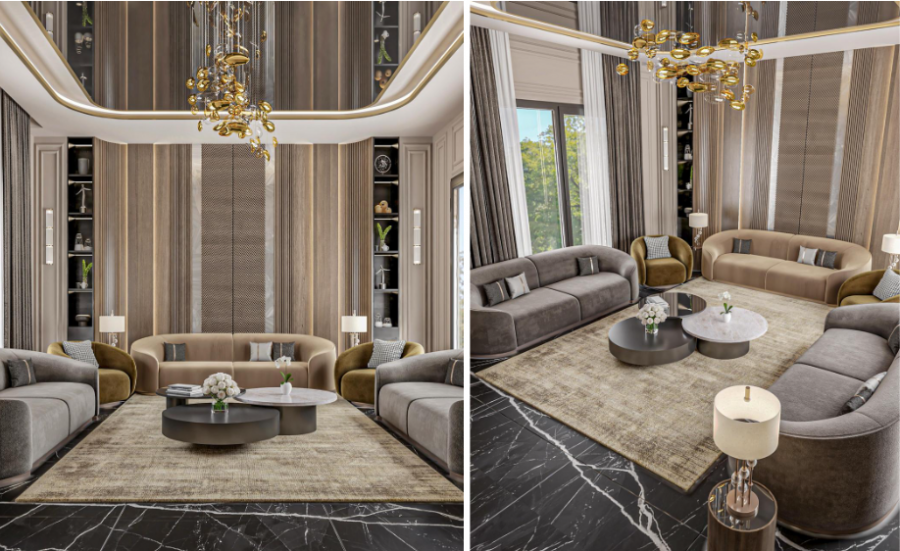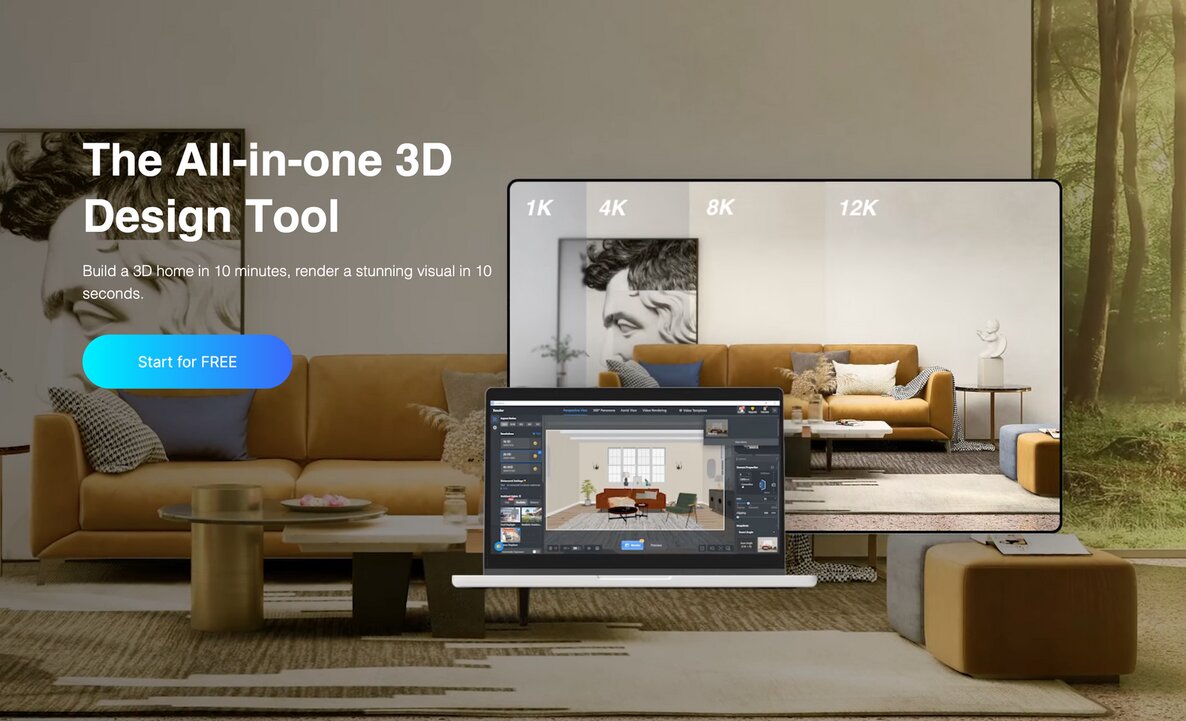Meet Ahmed: The Next-Gen Designer Bridging Tradition and Innovation
Ahmed Ali Abdelaziz Awad, a young architect and interior designer from Cairo, Egypt, represents a new wave of creatives who are redefining their craft with cutting-edge tools. A recent graduate of Zagazig University, Ahmed’s portfolio includes ambitious projects like the Olympic Village Stadium—a testament to his skills in 3D modeling, rendering, and conceptual design.
By day, he works at his family’s firm, Arciv; by night, he freelances, driven by a personal passion for design. While his father—a traditional civil engineer—focuses on structural frameworks, Ahmed fills in the “inner beauty,” blending functionality with artistry. It’s this balance of old and new that makes his journey so compelling.

The Workflow Savior: Discovering Coohom
Ahmed’s toolkit once revolved around heavyweights like 3ds Max and Corona Renderer. But rendering complex spaces was tedious: “Too many spaces to render, too hard to control.” Then, a friend mentioned Coohom—a risk that paid off.
“I took the leap, tried it, and it was really good. Now, I use it almost every day.”
What sets Coohom apart? For Ahmed, it’s the massive furniture library and intuitive modeling tools that revolutionized his workflow. Unlike 3ds Max, where sourcing models is a hassle. Hours would be spent scouring multiple websites, only to end up with potentially incompatible files—or worse, pixelated, low-quality textures. Coohom offers ready-to-use assets with one-click placement, editing, and even a favorites feature for quick access. “No more uploading headaches—just fast, high-quality renders,” he says.
His proudest moment? A stunning bathroom design where the tile textures rendered with breathtaking, almost tangible realism. “You could see every subtle vein in the marble, every imperfection in the grout lines—the kind of detail that would’ve taken me dozens of painstaking hours to approximate with traditional methods,” Ahmed recalls. That project became his epiphany: “When I stepped back and saw those reflections shimmering exactly as they would in sunlight, I knew—this wasn’t just a better tool. This was going to redefine how I create.”
Design Trends in Egypt: Modern Meets Bohemian
In Egypt’s burgeoning design scene, modern interiors dominate. But Ahmed marches to his own beat, favoring bohemian flair—a style rich in patterns and warmth. Other trends he notes: new classic, traditional classic, and a “naturalist” trend brimming with greenery. For inspiration, he turns to Pinterest, curating ideas that blend global trends with local tastes.
Yet, despite his forward-thinking approach, Ahmed is somewhat of a pioneer in his circle. “Most designers here still rely on traditional software,” he admits. But he’s confident the tide is turning: younger, tech-savvy designers like him are quick to adopt tools like Coohom. “Once they try it, they’ll see how effortless it makes design.”
The Future: AI as a Creative Partner
Ahmed’s story is a microcosm of a larger shift. As AI-powered tools like Coohom streamline workflows, designers are freed to focus on creativity rather than technical hurdles. For Ahmed, it’s not just about speed—it’s about elevating artistry in an industry where tradition runs deep. AI isn’t replacing us; it’s giving us wings. In studios from Cairo to beyond, that revolution is just beginning.
Final Thoughts
Ahmed embodies the modern designer: rooted in expertise but unafraid to embrace innovation. His journey with Coohom highlights a universal truth—the best tools don’t just simplify work; they amplify vision. As AI becomes a staple in creative fields, pioneers like Ahmed remind us: the future of design isn’t just automated; it’s inspired. After all, the soul of design lies not in the tool, but in the hands—and mind—of the artist, and we need to have the right tools to transform artistic visions into tangible reality.

